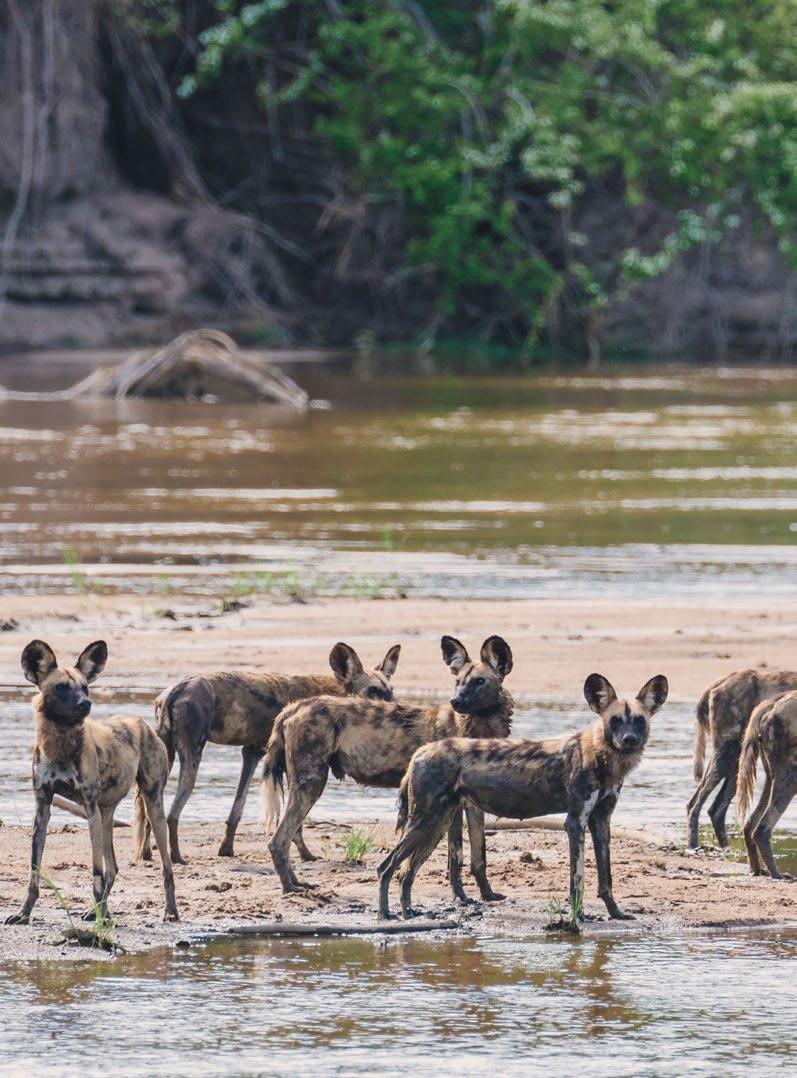

conserving Wildlife and Ecosystems focusing on Protected areas and outstanding Wild Places
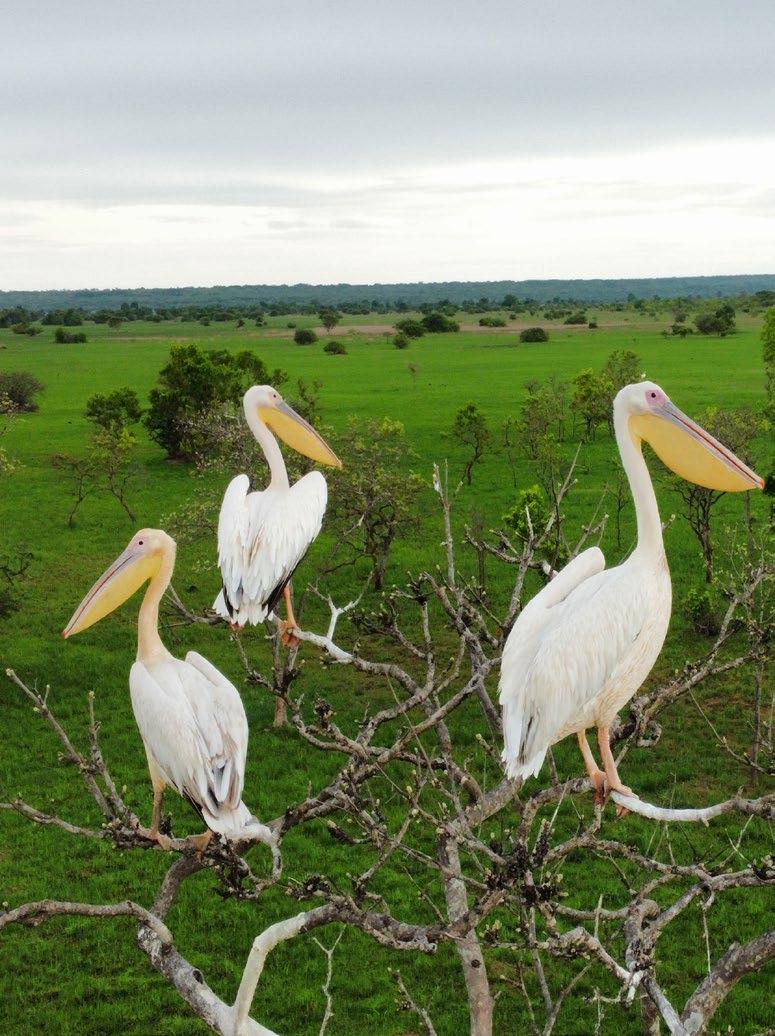


>5%
compound growth rate of black rhino in the north luangwa LANDSCAPE
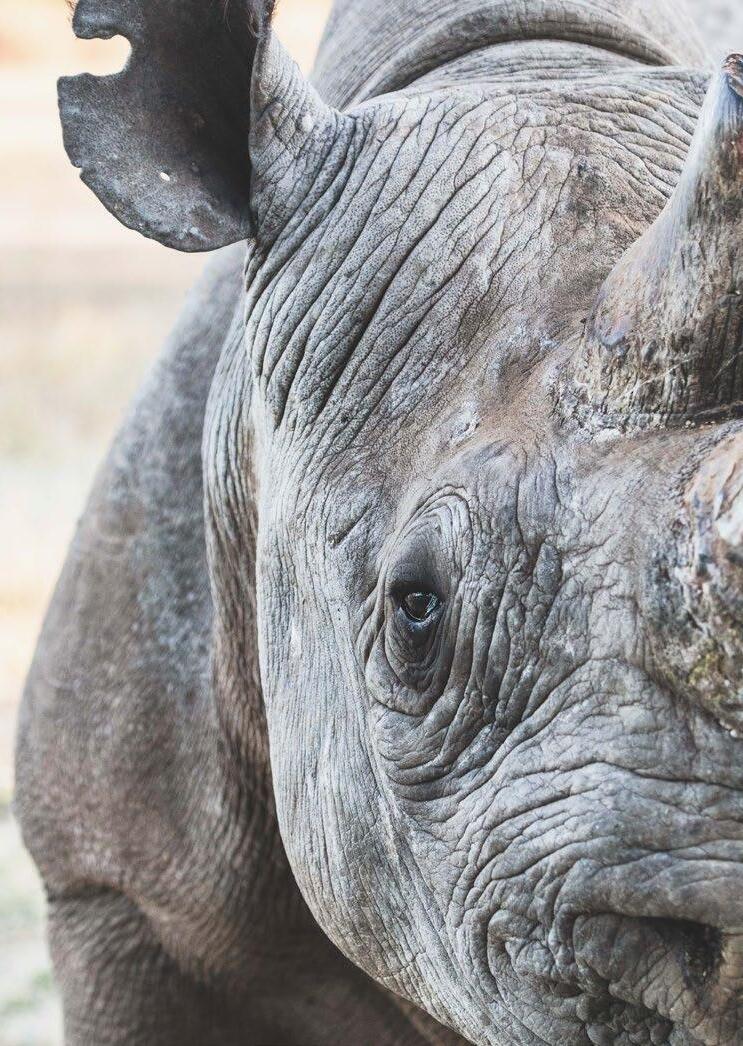



conserving Wildlife and Ecosystems focusing on Protected areas and outstanding Wild Places




2022 was another high-speed year full of activities and progress for both of our Frankfurt Zoological Society Zambia projects - the North Luangwa (NLCP) and Nsumbu Tanganyika Conservation Programmes (NTCP). Our approach is based around a number of conservation partnerships with Government through the Department of National Parks & Wildlife (DNPW), with communities through their respective Community Resource Boards (CRB), with other organisations who can offer expertise and deeper impact through their footprint, and with many other stakeholders, partners and donors. Therefore, regular engagement and trust are cornerstones of our work and we are proud to have maintained and strengthened these relationships throughout 2022.
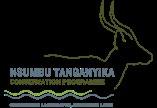
Both sites are consolidating after several years of growth but the threats to these landscapes are ever-increasing and evolving by the day. We are proud of the protection statistics that you will read about in this report – the results of implementation of our similar missions in North Luangwa of ‘Linking Livelihoods and Landscape’ and in Nsumbu of ‘Conserving Wildlife, Enriching Lives’. We have managed to do this by employing directly from our communities with a combined work force of 476 staff; 98% Zambian, with 85% being local residents .
The Environmental Social Management System established in North Luangwa has provided a clearer framework for our operations and was part of the key developments that led to the IUCN Green List Certification of the North Luangwa National Park in December 2022 – one of only 6 Green Listed sites in Africa from 77 candidates in 17 countries.

Combined with our evolving integrated landscape approach incorporating socioeconomic, health, nutrition and livelihood development we are building a stronger link between the communities and their landscape through conservation-based activities and this has been particularly significant in 2022 with the start of the HEARTH partnership in North Luangwa, signed with USAID.
Emerging challenges focus around illegal land loss and illegal timber harvesting, but again through our conservation partnerships we are standing up and beginning to have successes, and develop responses to these new threats.

Looking ahead to 2023 we will be strengthening our teams with key positions and expertise as well as new recruits from our landscape communities for law enforcement efforts. We are excited to take our first steps to establish Zambia’s next black rhino founder population in Nsumbu National Park guided through a feasibility assessment and expect to sign our new collaborative management partnership for North Luangwa National Park with the Zambian Government; and follow that with new innovative conservation partnerships for the Game Management Areas outside the core National Parks.
We hope you enjoy this update and wish to thank you for supporting our work and the partnerships for the future of communities and wildlife in the Nsumbu and North Luangwa landscapes
Kind regards,
Ed Sayernorth luangwa national park: 4636 km²
TOTAL operational area: 22,000 km² programme commenced: 1986
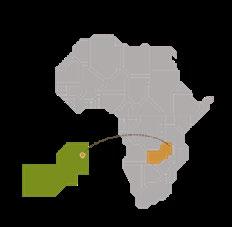
a partnership between dnpw & fzs
Since 1998, NLCP’s mandate has been to support the security of North Luangwa National Park (NLNP). Poaching remains an ever-present threat, particularly the illegal offtake of wildlife in the surrounding Game Management Areas (GMA).
Over the last 25+ years, NLCP has produced the best law enforcement units in the country through effective recruitment, ongoing upskilling and capacity building, identifying and building leaders, and setting the high standards needed to secure the country’s only black rhino population.
Alert to the ever-changing threat of the illegal wildlife and timber trades, NLCP has invested heavily in the last 10 years in DNPW’s Investigations and Intelligence Units, covering North Luangwa National Park, the surrounding Game Management Areas and extends further north to the Tanzanian Border, east to the Malawi border, west to Northern Province, and south the Central Province.
The North Luangwa Canine Unit has five dogs – Tango, Gypsy, Jemma, Mukwa and Icke – and 17 highly skilled handlers. The dogs have been trained to track and detect ammunition and guns, elephant ivory, rhino horn, pangolin and bushmeat. The canine unit is an instrumental part of the North Luangwa Landscape (NLL) law enforcement strategy to detect and prevent poaching.
The FZS Zambia Specialist Canine Technical Advisor provides technical canine and specialist training expertise to the North Luangwa and Nsumbu (2 dogs, 6 handlers) canine units.
The NLCP established the Rhino and Elephant Protection Unit (REPU) in 2018. REPU is specialist-trained and equipped to proactively defend North Luangwa National Park and to respond rapidly to poaching hot-spot areas throughout the ecosystem. The Rhino Monitoring Unit (RMU) is a specialised sub-unit of REPU that monitors and protects the re-established black rhino population. These units have been instrumental in reducing poached elephants numbers to their lowest in a decade and achieving one of few continent-wide black rhino populations to claim ‘zero poached’, since the population was reintroduced 20 years ago.
“Growing up, we were told that women can’t work in law enforcement. The only careers that were considered feminine were teaching and nursing. But here we are, trendsetting and breaking societal barriers of what are acceptable career choices for women.”

Aerial surveillance forms a key part of the fight against the illegal wildlife trade by providing capacity to visually confirm locations of anti-poaching patrol teams; to monitor wildlife movements and specifically locate collared / Vhf transmitter / geo-tagged animals; to monitor fires (controlled and wild); to check on standing water and vegetation; to assess the impact of human encroachment on boundaries; and to detect signs of illegal activity across the vast, remote and largely road-less landscape.
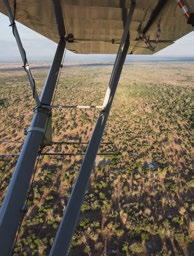
NLCP operates a Cessna 206 and an Aviat Husky fixed-wing aircraft in support of ecosystem management. Helicopters have also been used intermittently in NLNP to provide capacity for intensive operations in poaching hotspot areas, where focused surveillance with pre- and post-positioned reaction teams combine to survey an area, and to support rapid deployment capabilities in reaction situations.

A key focus of the management of the North Luangwa landscape is ensuring that the fauna and flora are safeguarded against harm. The NLCP is responsible for maintaining and sustaining the integrity of NLNP and includes activities such as the removal of invasive alien plants, creating firebreaks, managing controlled burning and reducing arson fires. Ongoing road construction and maintenance also helps to reach affected areas, aiding in improved landscape protection.
NLCP’s primary role and main financial focus for many years has been to improve and maintain the high standards of law enforcement work to deter, deflect and detect poacher infiltration, set against the ultimate barometer – securing and safeguarding Zambia’s only black rhino and largest elephant populations. To this end, specialist, in-service, advanced tactical, leadership and recruit training cycles are implemented to improve skills, discipline, and motivation, to guard against complacency and to deliver tactics to sustain the NLL. Annual operational training plans are developed based on changing / emerging threats, manpower requirement / turnover, and adaptive management decision making.
0
black rhinos poached
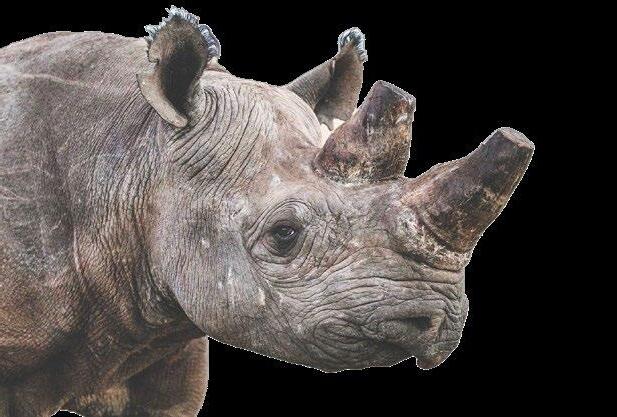

rhinos born
169
3 firearms confiscated
1 rhino rescued
4 elephants poached Lowest since 2017
714 pieces ammunition seized
861 pieces bushmeat seized
31 kilometres of new roads
14 training sessions FOR 380 LAW ENFORCEMENT PERSONNEL
349 arrests [473 incidents]
1488 patrols >65,000 kms; 31,038 man days
470 hours flown by the cessna 206 covering 54,000 nautical miles
294 hours flown by the aviat husky covering 17,000 nautical miles

180 hours flown by helicopter
80 village operations by canine unit [466 houses and buildings]
225 road blocks by canine unit [22,077 vehicles]
The Community Outreach Programme is focused on six main areas of communicate, connect and change; and educate, empower and enterprise.
The NLCP directly engaged with >70,000 rural household members for improving livelihoods, income generating opportunities, promoting conservation practices, and girls’ and women’s empowerment.

Activities are delivered by four Community Conservation Educators focused on giving students access to conservation and social health education. Formation and roll out of conservation clubs in primary schools in Nabwalya has improved local participation and engagement in the management of natural resources. NLCP has also engaged in adult education and established 12 Mini-Change Project groups. The groups determine their own learning pathway centred around an environmental or social issue they would like to address.
NLCP believes that investing in adolescent girls and young women is a critical step to breaking the cycle of poverty in surrounding villages. Engaging with both men and women, boys and girls is the key to change. NLCP has trained six staff in Women’s Leadership and Empowerment to help mainstream gender, diversity and inclusivity in all NLCP activities and community engagement.
Cultural practices such as early marriage or underage pregnancy further disadvantage females from finishing their education. Menstruation and reproductive health are taboo subjects and access to materials can be non-existent. Many do not go to school during their periods, missing out on studies. Breaking down barriers and finding healthy and positive ways to impact young women is a strong focus.
In 2022, we continued spouse visits to NLNP for partners (mainly female) to understand the work environment and feel included in the NLCP family as it is the partner who provides care and support
92% deterred by electric
FIELD incursions fences in pilot sites
>70,000
1800 students in 26 Conservation Clubs
to the family home while officers are carrying out their duties.
To ensure responsible land use and management, a participatory planning process was launched in all the target Village Action Groups (VAG) and a leaderled monitoring and enforcement system has been developed. In addition, a pilot programme was conducted to map and document agricultural land, resulting in the issuance of local certificates in four VAGs located in Chikwa and Chifunda. This experiment bolstered customary leadership and the overall stewardship of the land.
Human wildlife coexistence (HWC) can have serious consequences for people living and working near wildlife, resulting in human injury or death, crop losses (85% of incidents) and livestock (particularly poultry) losses. Crops are traditionally stored in open baskets or large containers made from a netting of branches or sorghum stems. These containers can easily be accessed by elephants, causing very large losses within a short time. NLCP supported construction of elephant proof grain stores, trials of electric and ‘shiny, noisy and smelly’ fences, and motion activated floodlights/alarms. A number of fences have been constructed around the fields of groups of farmers to test their effectiveness in deterring destruction of crops.
Farmers are also trained in wildlife-friendly farming techniques, such as the creation of conservation compatible planning and management areas around crop fields, and the use of chilli blasters (non-lethal tube guns firing a mixture of chilli and oil), to try to chase away any animals that have not been deterred by other preventative methods.
People in villages around North Luangwa National Park are extremely poor (poverty levels are >30% higher than the national average) and hard to reach. Inadequate nutrition, health, and education levels leave households vulnerable and food insecure, resulting in globally high stunting rates (40% of under-5s), which inhibits individual and community development. Poverty is driven by scarce rural employment; few livelihood and market opportunities due to limited access to infrastructure; poor agricultural practices in rain-fed monoculture systems; and a depletion of the rich natural capital due to unplanned land conversion. In an effort to help improve livelihoods, NLCP works with local people to help grow successful businesses.
NLCP created a hub in Chifunda Chiefdom (in partnership with ZayoHub) which aims to provide alternative

livelihood opportunities, connectivity, renewable energy options, education in livelihood alternatives and improved financial access (micro loans and mobile money).
The Community Conservation Banking (CoCoBa) microfinance programme continues to grow and strengthen in terms of sustainability. This programme facilitates the formation of village savings and loans groups. Loans are used for business opportunities such as making school uniforms, knitting school jerseys, running grocery kiosks, trading rice, vegetables, or bananas, making buns and fritters, building small houses for rent, goat and chicken rearing, and making baskets. After annual share outs, many members use their savings for agricultural inputs. CoCoBa groups are also being used as an entry point for other initiatives, such as training advocates for family planning and gender awareness. Overall, CoCoBa schemes have helped communities trapped in a dependency pattern
with several individual success stories. Both community perceptions and more detailed analysis suggest there are positive economic benefits, as well as social empowerment and, potentially, real behaviour change around conservation initiatives.
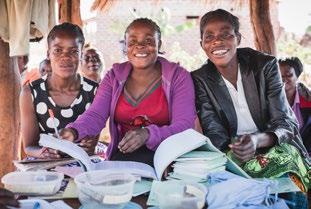
NLCP has partnered with WeForest to assist in the distribution of hives for honey production and additional partnerships to get unprocessed honey into the value chain with niche marketing. NLCP also works on mentoring and monitoring to encourage participants to increase their income and improve the timing of harvesting to improve both yields and profits. This also serves to promote forestry management practices that protect against fire damage to bee colonies, and beekeepers are being sensitised and trained on protecting the forest resource.
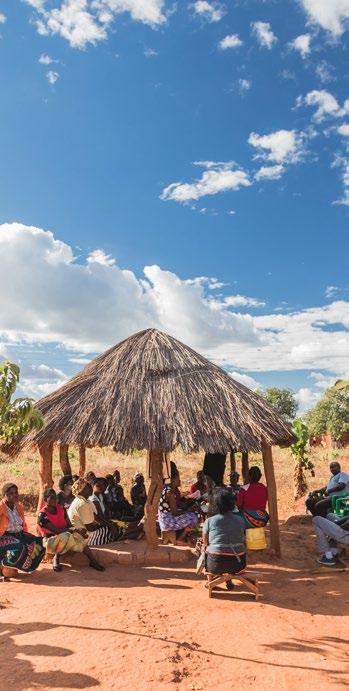
NLCP works to maintain, build and strengthen close relationships with relevant conservation and local community stakeholders that operate within the NLL. Specifically in 2022, a major focus was the development and implementation of the Stakeholder Engagement Plan aiming to improve record keeping of all consultations; develop and document SOPs to guide outreach programme planning; and actively pursue gender equality, inclusivity and diversity to encourage female participation taking into account women’s use of natural resources, and their livelihood and caregiving responsibilities.

NLCP forges strong links with multi-agency offices throughout the Mpika and Chama Districts, the Muchinga Province and beyond. Once a year NLCP hosts the Mpika District Joint Operations Committee, of the Office of the President, the Zambia National Service, Police, Prisons, Drug Enforcement Commission, Immigration and DNPW. In September 2022, NLCP also hosted the Permanent Secretary to the Ministry of Tourism and Arts, and the Director of DNPW.
NLCP also established five Chiefdom Conservation Committees (CCC) Mukungule, Nabwalya, Chikwa, Chifunda, and Lundu, bringing together natural resource management (NRM) stakeholders in each Chiefdom. These committees will meet up to three times a year to work together on issues that need joint attention like land-use conflicts or coordinating law enforcement for community-managed fisheries, forestry, or wildlife. The committees are chaired by the local Chief, and everyone is invited to join in, including community groups, government offices and NGOs. If they can’t find solutions at the chiefdom level, they’ll turn to the North Luangwa Landscape Forum. The CCCs have a whole list of goals, including coordinating natural resource management programmes, building a platform for information sharing and capacity building, and raising funds for NRM activities. The next step will be the set-up of a stakeholder database in the respective Chiefdoms.
The NLCP outreach programme focused on building governance in the VAGs and CRBs and supported the development of Village Land Use Plans (VLUP) through to GMA zonation plans. The CRB governance manuals were finalised and shared; and they include guidelines for VAG management, gender equality, human wildlife coexistence, natural resources management, human resources management and procurement.
FZS Zambia continues to play a leading role in efforts to change and update the national policy for Community Based Natural Resource Management (CBNRM), through the support of the national CRB Association and CBNRM Forum. In 2022, the Forum engaged Government through a Parliamentary sub-committee and successfully redrafted the CBNRM policy on ownership, governance, decision making and revenue sharing in the GMAs that adjoin national parks and provide the essential buffer areas for large landscapes.
The draft CBNRM Policy and Implementation Plan was completed and submitted to the Ministry of Tourism and Arts and Cabinet Office in early 2022. FZS-ZM is lobbying strongly for decentralisation and improved benefit sharing with communities.

At a more local level NLCP has done considerable work over the last five years on improving governance and participation in VAGs and CRBs by providing leadership training, supporting regular meetings, mentoring, and increasing understanding of roles and responsibilities of position-holders. This is in large part achieved through the joint development of institutional structures and standard procedures for development and use of finance and admin manuals, human resources manuals and constitutions.
As part of community-led adult conservation 12 Mini Change Project (MCP) groups with 256 group members have been formed. Each group identifies a challenge needing change (including deforestation, bush fire, early marriages, inadequate teaching in public schools and unsustainable fishing). The Chipundu MCP chose saving the Chipundu stream from siltation. This group created a local ‘by-law’ for farmers to cultivate at least 100m away from the stream edge, and to propagate an indigenous tree nursery to plant fruit, nut, and timber trees to help stabilize soils against erosion.
NLCP has expanded significantly in the last 15 years, growing its annual budget 10-fold from <$500,000 to c. $6,000,000 in 2022. Transitioning from a modest entity to the large organisation it is today has not been without its challenges in terms of staffing and structure. NLCP has built its staff complement and worked extra hard at identifying talent within its ranks to promote and develop. Recent appointments of an HR Officer, Project Development Manager and Special Projects Manager have helped share and create new initiatives to drive forward NLCP’s mission of Linking Livelihoods and Landscape.
NLCP is committed to using evidence-based decision making and adaptive management and utilises SMART, EarthRanger and Tableau to collect, collate and analyse data. Data reviews are integrated into work culture and used to promote reflection and activity modification.
NLCP developed its Environmental and Social Management System (ESMS) and associated Action Plans to address risk mitigation to the organisation, partnerships, staff, and stakeholders. NLCP completed a review of the ESMS in 2022 and has made significant steps to improve its risk mitigation (e.g. bunding for spillages, personal protective equipment, and waste management). The ESMS remains a dynamic suite of documents with policies, standard operating procedures, and organisational positions to improve its integrity.

>30,000 avg. km covered per year per vehicle
Underpinning so much of NLCP’s success is it’s technical support, enabling its people to effectively bring about positive conservation outcomes. Reliable transport is absolutely critical to ensuring that NLCP is mobile and able to respond and proactively initiate activities to get the job done, and the size and scale of NLCP and its remoteness only compounds this. Land Cruisers are the backbone of the NLCP’s operations. In 2022, NLCP began work on relocating its headquarters to the western escarpment Park gate at Mano. Land has been granted by Chief Mukungule to build a workshop, offices, stores, and houses for staff.
Building a team that can rely on one another and work harmoniously is an important aspect of morale and motivation, as well as placing priority on health and well-being. Having a happy and healthy team is important to NLCP and a core value of who we are. Each week we encourage staff to take part in exercise for mental and physical well-being. Team running is a regular event and ex-Olympic sprinter Ngozi Mwanamwambwa Asinga of Gogo Fitness visited NLNP to teach new workout programmes. The NLCP team also successfully defended their title at Tangila Trails in the 22km team run for the Solomon Chidunuka Memorial Challenge as well as taking part in the Wildlife Ranger Challenge, London Marathon and a number of other fun events.
100 vehicles / motorised equipment in use

1,300 kilometres roads maintained
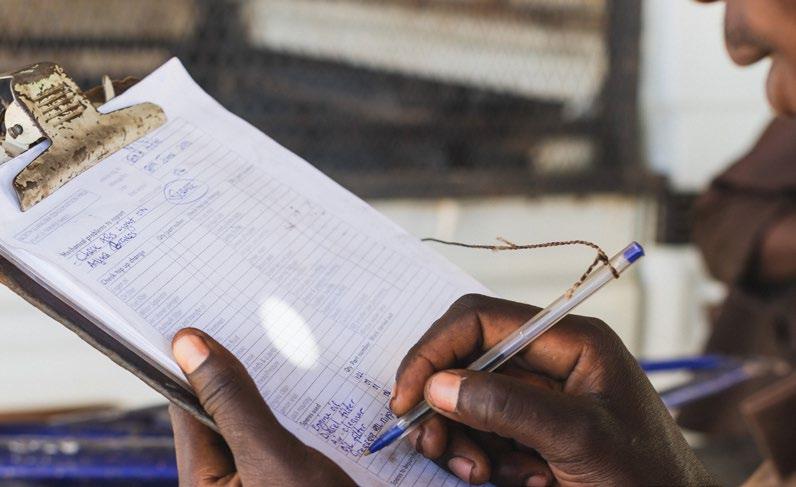
Creating a motivated, inspired and healthy mindset is integral to workplace satisfaction. Each year the NLCP sponsors a mix of scouts and staff to participate in the Tangila Trails Solomon Chidunuka Memorial challenge, a hotly contested 22km trail running challenge between different conservation groups in Zambia. NLCP has proudly won this event three years in a row in 2021 and 2022.


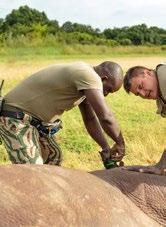
The return of Chilunda: this young bull had escaped from the North Luangwa National Park to an area where he ran a high risk of being poached. A large operation, including two helicopters, was completed, bringing him 220km home by sling. This is the longest distance that a rhino has been transported in this way and the first time ever in Zambia. This was all made possible by collaboration between FZS, the Department for National Parks & Wildlife, the Zambian Airforce, Conservation South Luangwa, Niner Juliet Logistics, and with expert advice from rhino vet Dr. Markus Hofmeyr.

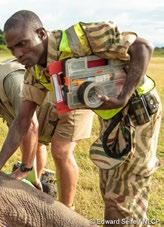
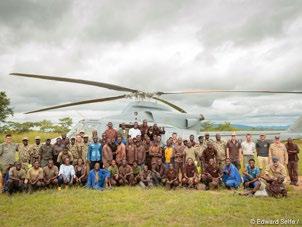
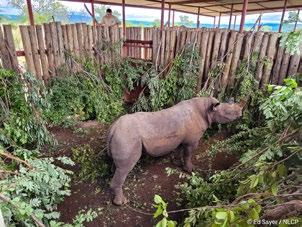

Development of community-led tourism in the Mukungule, Chifunda and Nabwalya GMAs has continued with the first built sites of Samala and Ituba Community Camps welcoming visitors throughout 2022. Construction of the third site (Mandalena) was initiated in December and the camp will open in 2023. In addition, a set of campsites within the park have been developedthe Amatololo Experience - a new North Luangwa self-drive circuit. The tourism operator/community partnership model is intended to bring mutually beneficially
economic diversification to both parties, promote conservation, develop skills and job opportunities and bring more economic traffic to the North Luangwa landscape. Tourism plans for 2023 are to build the income generated by the existing camps as well as develop additional opportunities to promote tourism in North Luangwa. A particular focus will be the promotion of North Luangwa as a destination for Zambian citizens by providing an affordable options to access NLNP that are more usually priced for the international market.
The Zambian DNPW is partnering in a Trilateral Cooperation Project between Germany, China and Zambia named “Fair and effective protected area management for sustainable development – working together towards global standards”.

was selected as the first of the pilot sites to be assessed for certification according to the IUCN ‘Green List Standard’.

IUCN’s Green List Standard of Protected and Conserved Areas is the first and leading global standard for good practices in site-based conservation management. The Green List process acts as an incentive and offers a stepwise programme that can help make protected areas fit for the future by identifying and addressing weaknesses and thus secure past successes and future investments, while promoting tourism. Currently, 59 areas in 16 countries are listed worldwide, five of them in African countries (Kenya and Egypt); North Luangwa is the sixth.

The IUCN Green List certifies that protected and conserved areas are effectively managed and fairly governed, with long-term positive impacts on people and nature based on a set of demanding criteria
The project aims at improving the quality of Zambia’s protected area management and governance through the implementation of the ‘Green List of Protected and Conserved Areas’ of the IUCN. A Zambian Expert Assessment Group for the Green List has been established to implement this certification process at national level, which will benefit identified protected areas, and North Luangwa National Park
Sites that have achieved Green List status have proven that their fundraising efforts are improved and eased with this accreditation. It is also an intended benefit that sites with Green List status may enjoy reduced burden of reporting on grants, with some funders using Green List accreditation as assurance of fair and effective conservation measures.
North Luangwa Conservation Programme is leading the way in Zambia and will be used as a benchmark for effective and equitable conservation going forward, as more and more sites enter the Green List process.





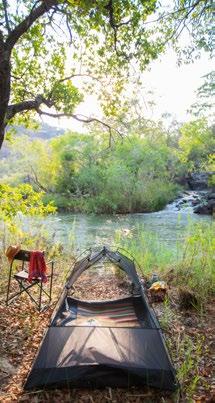
North Luangwa National Park together with its four surrounding Game Management Areas, comprises the North Luangwa Landscape: a 22,000km2 rural human and wildlife conservation ecosystem, which boasts breath taking topography and serves as a haven for iconic species. The ecosystem is of international conservation importance, is the only area in Zambia with a full historical species complement, and is the only section of the Luangwa Valley that has protected area status across the entire valley floor. It is home to Zambia’s largest, most densely populated, and fastest growing African elephant population (IUCN Red List: vulnerable); its only population of black rhino (IUCN Red List: critically endangered ); one of Africa’s last ten strongholds of African lions (vulnerable); represents resident range for African wild dogs (endangered ); and supports significant populations of African buffalo, hippopotamus (vulnerable), and leopard (vulnerable); as well as home to the endemic subspecies Cookson’s wildebeest.
It has a high diversity in birds and is important to migratory species. It is home to several Marabou stork colonies and one of only two Yellow- billed stork colonies in the Luangwa ecosystem. The Luangwa Valley is listed among the world’s centres of global plant diversity. The NLL represents the northern limit of southern Africa’s Colophospermum mopane belt and eastern limit of the Central Zambezian miombo woodlands (dominated by high trees of the Brachystegia, Julbernardia, and Isoberlinia spp.)
With shrub and grassland, mopane and miombo woodland are important habitats counteracting climate change on an Africawide scale, and the NLL is in the unique position of being at the transition zone of both these habitats.
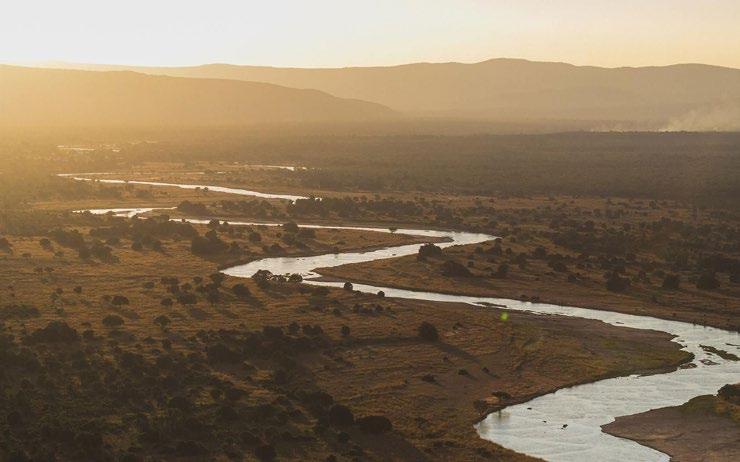
The Muchinga Escarpment (to the west of the ecosystem) hosts the most important freshwater catchment for the mid-Luangwa River. Four of the Luangwa River’s six perennial tributaries originate here, making it vital for the health and status of the Luangwa River, which has recently been proposed as a gazetted Water Resource Protection Area and therefore recognised as a critical habitat and a lifeline for a large variety of unique and endangered wildlife species, its downstream users, and one of the major tributaries of the mighty Zambezi River.
The Park was first established in 1972, and Frankfurt Zoological Society has been an implementing partner with the Zambian Government Department of National Parks and Wildlife since 1986 through its North Luangwa Conservation Programme. FZS-Zambia is a registered NGO and operates in collaboration with DNPW as currently governed by the NLCP MoU (valid since 1986), which was extended indefinitely until a co-management agreement is signed. FZS-Zambia is in the final stages of signing a collaborative management partnership with DNPW, which will govern park management through a joint and equal partnership.
The expanding communities of the NLL are extremely poor (poverty levels are >30% higher than the national average) and hard to reach. Poverty is driven by scarce rural employment; few livelihood and market opportunities due to limited access to infrastructure such as roads, mobile networks, or power; poor agricultural practices in rain-fed monoculture systems; and a depletion of the rich natural capital of the Luangwa Valley and Muchinga Escarpment due to land conversion to agriculture. GMA-resident communities are additionally disadvantaged by restricted land-use practices and the significant direct and indirect impact of co-existence with wildlife.
Inadequate nutrition, health, and education levels, inextricably linked with subsistence agricultural production, render households even more vulnerable and food insecure, resulting in globally high stunting rates, which inhibits individual and community development by negatively impacting health, productivity, and economic potential.
Unsustainable, especially commercial, offtake of the area’s flora and fauna likely has the biggest potential to impact the ecosystem as it includes some of Zambia’s prime wildlife areas. Pressure from offtake levels of e.g. illegal extraction of natural
NLCP employs 340 full-time positions, across its multi-disciplinary departments, to address the key challenges facing the North Luangwa Ecosystem by taking a holistic approach through its mission Linking Livelihoods and Landscape for a more resilient socio-ecological ecosystem. This theory of change aims to address the following challenges: POVERTY (unemployment; poor economic climate; lack of investment; small circular economies); SOCIAL + ECONOMIC (limited benefit flow from natural resources, too remote for Government efforts to reach); FINANCIAL SUSTAINABILITY (limited tourism revenue and limited access; lack of investment in (eco)tourism options); EXTERNAL / POLITICAL (interference of external / political forces; inadequate policy; insufficient resources); NATURAL RESOURCE THREATS + DEGRADATION (encroachment; unsustainable agricultural practices; deforestation; poaching) by deploying a variety of tactics underneath its four strategic goals:
resources, unsustainable agricultural practices, unplanned land conversion, etc. at the fringe areas of the NLL leads to negative conversion rates in some areas and poses a permanent threat to human and wildlife populations due to potentially unsustainable edge effects in an ecological source-sink scenario. Just because ecosystem damaging practices may be permissible, they should be preventable through appropriate engagement, driven first and foremost by adherence to site-specific General Management Plans and Village Land Use Plans.
Other threats such as illegal mining / deforestation in the GMAs lead to pollution / sedimentation of drinking water resulting in considerable knock-on effects if they impact ecosystem function.
Illegal timber trafficking is an emerging and consistent threat that can severely impact the integrity of the North Luangwa. NLCP has recently started recording these incidents and arrests to assess the severity of the issue.
Robust and adaptive large landscape management of natural assets to secure, safeguard and sustain wildlife, habitats and ecological services in NLNP and neighbouring communities.
Positively engage in creative and beneficial initiatives to empower, educate and deliver enterprise opportunities for neighbouring communities and wider Zambian civil society.
Focused messaging to communicate and connect with stakeholders and partners for effective and positive change.
Transparent, effective and enduring organisational and financial structure according to NLCP’s core values with efficient systems to support a mentally and physically healthy team.
 Image by Elise BrazierIcon Tribe Designs
Image by Elise BrazierIcon Tribe Designs
NSUMBU national park: 2,026 km²
TOTAL operational area: 7,000 km²
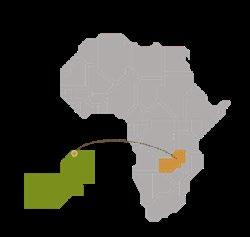
programme commenced: 2017
a partnership between dnpw & fzs
The Nsumbu-Tanganyika Conservation Programme (NTCP) is a conservation initiative based in north-eastern Zambia that focuses on preserving wildlife and their habitats. The NTCP is centered around the Nsumbu National Park, the adjacent Game Management Areas, and the largest, most effectively protected portion of Lake Tanganyika – one of the most biologically diverse freshwater ecosystems in the world. A little-known protected area, Nsumbu retains an astounding array of pristine natural habitats including the endangered Sumbu-Itigi thickets that still provide critical habitat to mega herbivores.
In 2022, the NTCP consolidated gains in law enforcement and security measures to protect the ecosystem. A professional scout force equipped with the necessary resources receives regular training to maintain skills and discipline with consistent patrols conducted under motivated leadership. A Quick Response Force was established for swift action. The new law enforcement base is now complete, providing a much-needed centralized base for ongoing law enforcement and a more comprehensive protected area approach. With increased security, the NTCP is expanding its reach to previously underserved parts of the protected area. Encouragingly, elephants have been spotted in regions not seen for decades and no elephants have been detected as poached since 2018.
Improvements in security in and around Nsumbu National Park since FZS entered the landscape in 2017, has led to a gradual but promising recovery of wildlife and ecosystem functions. The extensive protected area management work with intensive efforts to secure the landscape puts the project on strong footing to enable the reintroduction of endangered species. African lions, absent from the area for a decade, will soon roam the Nsumbu landscape once again. Reintroduction plans are underway, which has gained widespread support from a diverse group of stakeholders who have been actively involved in the planning process. The NTCP is committed to ensuring that the reintroduction of lions meets the highest standards of responsible conservation.
In the towns near Nsumbu National Park, three Investigations and Intelligence Units (IIUs) are operational and play a crucial role in supporting law enforcement operations. Information gathered by these units guides field patrols, and canine units, thereby reducing threats before incidents occur. Their efforts in 2022 led to successful collaborations with the Zambia Police in cases involving illegal fishing and timber extraction, contributing to improved management of the protected area. The IIUs are instrumental in mitigating threats and ensuring the safety of the protected area’s valuable resources.

Aerial capacity has been established in Nsumbu, with a modified Husky aircraft now permanently deployed to the landscape. Aerial surveillance provides a whole new dimension of operational effectiveness, enhancing all other law enforcement efforts. The plane adds particular value in this vast landscape with limited and seasonal road access; providing eyes in the sky for antipoaching operations, Human-Wildlife Co-existence, ecological monitoring activities, fire-management and the protection of the lake’s protected waters from illegal fishing.
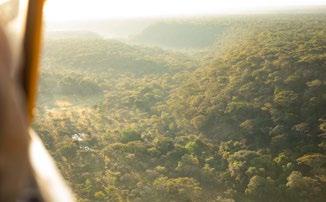
Nsumbu has a team of six skilled handlers, certified by the American Society of Canine Trainers, who work with two detection dogs as part of the overall law enforcement approach. To ensure the welfare and safety of the dogs, a dedicated operational base has been established within the national park. This base includes kennels, handler accommodation, office facilities, and a dog play area and pool. The dog detection unit collaborates closely with the Investigations and Intelligence Units, ensuring well-coordinated operations for maximum effectiveness.
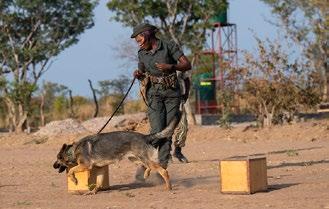 elephants poached
elephants poached
79 convictions from 99 arrests
426 patrols 11,156 man days
997 wire snares removed
261 kg of bush meat seized
59 firearms confiscated
79 pieces ammunition seized
109
KM ² OF LAKE TANGANYIKA
WATERS PROTECTED

tanganyika boat unit
2 dedicated boats
59 illegal fishing nets seized
33 boats seized

Community involvement is crucial for successful conservation efforts. Project expansion is supported by complementary community engagement in the relevant areas adjacent to the national park, ultimately widening the landscape under conservation management as well as providing buffers between wildlife areas and human settlements. The employment of community members as scouts in conjunction with the Community Resource Board provides a direct link between natural resources and livelihoods. Sustained support of community governance structures include supporting organisational elections, planning meetings and ensuring progress towards improved governance and financial accountability regarding natural resource management.

Twice a year, community conservation days are organized, utilizing engaging methods such as drama, poetry, art presentations, and song to educate the public on various conservation issues. These events are highly anticipated and also celebrate outstanding students and conservation-minded teachers from local schools. By involving and empowering communities, the project fosters a sense of ownership and ensures the long-term sustainability of conservation efforts while nurturing a harmonious relationship between people and nature.
The SUFINA Education Programme is dedicated to teaching students about the significance of wildlife and natural resource conservation. SUFINA, derived from the Bemba expression Sungeni Ifilengwa Na Lesa (Conserve our Natural Resources), aims to instill a lifelong understanding and appreciation of cthe value of nature to human lives. The program consists of a 16-lesson curriculum implemented in five schools, covering various topics related to the importance of preserving wildlife, natural resources, and the environment.
The interactive nature of SUFINA classes, along with the inclusion of learning aids, has resulted in high attendance rates with teachers and parents supporting the program. To enhance students’ understanding, the curriculum is complemented by visits to the park. These trips provide a first-hand experience of conservation efforts and often mark the first time students encounter wild animals. They also foster positive engagement with personnel from the Zambian Department of National Parks and Wildlife and foster positive engagement between local communities and personnel.
Through the SUFINA Education Programme, students are empowered with knowledge, encouranging a sense of responsibility and inspiring them to become champions of conservation in their communities.
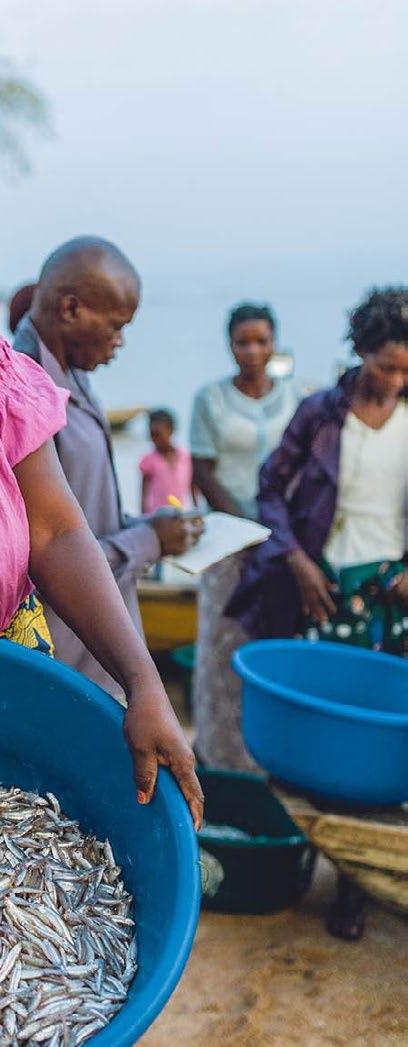
Per capita income in the Nsumbu-Tanganyika ecosystem lies well below the national average, with many people living below the poverty line. Communities face periods of food insecurity and opportunities for economic improvement are limited. To address this, the NTCP has implemented conservation-based livelihood support projects. One major component of this is the establishment of four Community Fisheries Management Committees to improve fisheries management. These are complemented by training in improved post-harvest fish handling and processing, boosting economic prospects in small-scale fisheries, which are vital for local livelihoods.
Conservation-based revenue is further being developed through the community-owned Kapelembe camp within Tondwa GMA, in partnership with Tondwa Conservation Limited. These initiatives aim to uplift the economic situation of the local population while promoting sustainable conservation practices. By integrating economic development with conservation efforts, the NTCP strives to create a win-win situation where communities can thrive while preserving the natural resources of the ecosystem.
480 students in conservation education
2,764 community members directly engaged
With improved security, operations have expanded to the previously underserved areas of the park. A new road access crossing the Lufubu River has reduced travel distance from 600km to just 40km, linking the northern and southern side of the protected area for the first time in decades. This facilitates community-based natural resource management and law enforcement activities in Chitimbwa Chiefdom.
Efficient maintenance of land and water-based transport ensures smooth mobility and support across all areas enabling operations to continue unimpeded, without excessive downtime, testament to diligent management and maintenance procedures. The project workshop provides assistance to community vehicles, as well as occasional repairs to other government partner vehicles.
Each patrol team is equipped with a dedicated Garmin InReach unit, which serves as the backbone for field patrol communications and monitoring. Patrol, ecological and fisheries data is collected, managed and analyzed using the Spatial Monitoring and Reporting tool (SMART) and EarthRanger to provide a near-real time overview to guide day-to-day protected area management. All communications are monitored in the control room, which is operational 24/7.
These infrastructure improvements, vehicle and equipment maintenance and technological advancements significantly enhance operational efficiency, allowing for better communication, coordination, and monitoring of field activities, supporting the conservation efforts in the Nsumbu-Tanganyika ecosystem.

The Nsumbu ecosystem is notoriously difficult to determine wildlife population data due to the dense vegetation and rugged landscape within which aerial surveys yield inconsistent results. However, efforts have been made to enhance locally-relevant ecological monitoring techniques using camera traps, distance sampling transects, and tracking collars, with new expansion of activities in recovering wildlife areas. While limited, early data indicates that the animal populations are on the increase.
An ecologist and dedicated Ecological Monitoring Unit ensure the collection of high quality, relevant data which informs project work, including wildlife reintroduction and posttranslocation monitoring. Ecological monitoring strategies involve the collaboration with subject matter specialists to strengthen data collection and analysis.
A fish biodiversity and population study has shown improvements in abundance and size of fish within the national park and adjacent community fish management zones relative to open waters. This highlights the importance of the aquatic conservation area linked to the Nsumbu National Park for biodiversity and fisheries management. The area plays a vital role in providing a refuge to fish where they are subject to reduced fishing pressure.
These monitoring efforts provide valuable insights into the health and conservation status of both terrestrial and aquatic ecosystems in the Nsumbu landscape. By tracking population trends and understanding the dynamics of wildlife and fish populations, park management can make informed decisions to protect and sustain the biodiversity of the area.
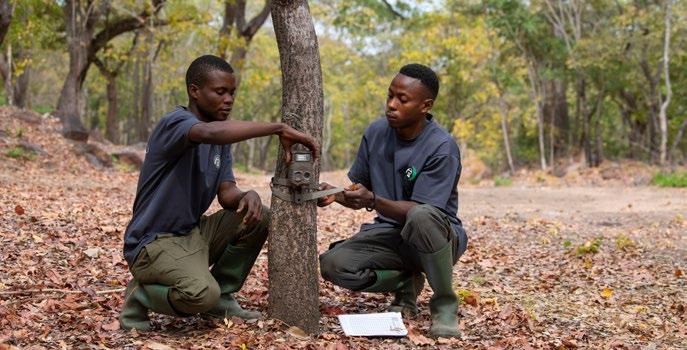
As a result of enhanced training, good equipment and hard work, the Nsumbu rangers placed double first (men’s and women’s teams) in the Wildlife Ranger Challenge against 93 other ranger teams across 21 African countries. This achievement has been extremely positive for team building, ranger pride and motivation and is testament to their hard work and commitment throughout the year.
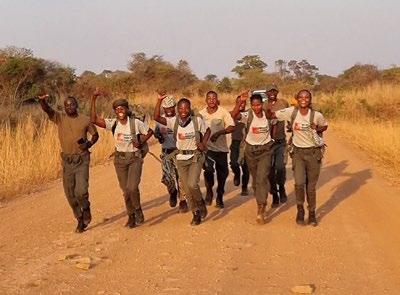

The NTCP continues to support existing governance structures in the Nsama Community Resource Board (CRB) and develop similar structures in the Chitimbwa communities to the east, promoting community-led governance and accountability in natural resource management. The CRB office-bearers participate in community conservation days, and have been critical in the development of the lion reintroduction strategy, engaging proactively with community members. Through these efforts, progress is being made towards improved governance and financial accountability in both Chiefdoms, ensuring effective management of natural resources.
1 ECOSYSTEM
Implement enforcement, monitoring, and management to protect the landscape, and promote thriving aquatic and terrestrial biodiversity, for sustainable resource use;
2 EMPOWERMENT
Activate a holistic approach to empowering and uplifting communities, and create equitable access to natural resource benefits;
The NTCP contributes to a positive and engaging relationship with all levels of provincial administration. Regular small-scale funding supports officers’ movements in the district, court appearances, attendance at key meetings with NTCP and other administration. Biannual unit meetings brings together sector leadership for review and planning sessions focused on protected area management.
The NTCP has worked closely with Conserve Global to facilitate the operationalization of Tondwa Conservation Limited as the conservation management partner in Tondwa GMA, which is now beginning to bear fruit. Support given to Conserve through the provision of information, logistical support and facilitation with partners has enabled the project to move forward.
3 ENGAGEMENT
Design and deliver effective communications for stakeholders to be fully engaged and informed, supporting positive attitudes and actions that contribute to conservation;
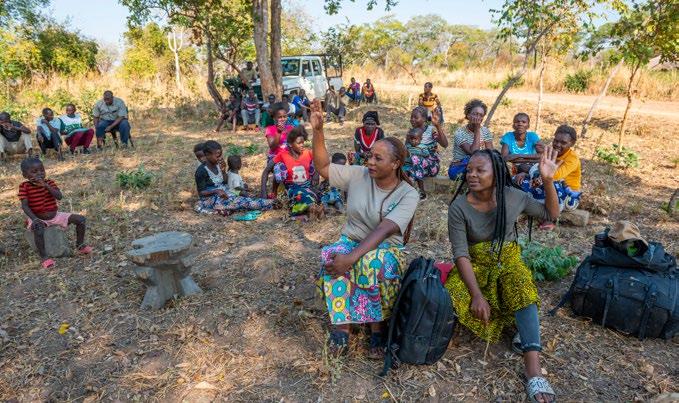
4 EFFECTIVENESS
Build transparent, accountable and efficient partnerships with clear structures, sufficient resources and organisational capability for delivering effective and positive conservation impact.
The Nsumbu-Mweru Ecosystem (NME) in north-eastern Zambia is characterized by extensive wetlands and endangered Sumbu-Itigi thickets. Historically famed for its large herds – and sizeable elephant, black rhino and lion populations – widespread poaching and overfishing exterminated black rhino and lion from the area and drastically reduced its genetically distinct elephant and fish populations. Due to its shared borders with the Democratic Republic of Congo and Tanzania, the area represents a hotspot of Illegal Wildlife Trade (IWT) with terrestrial and aquatic trade routes identified.
In 2017, FZS entered into an agreement with the Zambian Government to financially and technically support the NME to promote the recovery of the area and address the IWT. The partnership has yielded consistent results of continuously improving area security and recovery; most recently completing the translocation of 200 buffalo and 48 zebra to the area to boost local wildlife populations and build the backbone for planned future reintroductions of African lions and black rhino.
Located in the heart of an exceptional ecosystem, Nsumbu National Park lies between the great African Lakes of Tanganyika in the east and Mweru in the west. The Nsumbu-Mweru ecosystem (NME) is fundamentally linked to extensive aquatic habitats, varying from shallow basin lakes, small streams, swamplands, and floodplains to significant perennial rivers and finally a protected portion of Lake Tanganyika, one of the most biodiverse aquatic habitats on earth. Lake Tanganyika is up to 1,471m deep and forms the world’s second-deepest freshwater resource. It is estimated to harbour over 1,000 species of animals and is world-renowned for its Cichlids – a diverse group of fish that have shaped the ecosystem as well as our own understanding of evolution in the natural world.
Nsumbu National Park is the jewel in this landscape, a place where elephants roam along the shores of Lake Tanganyika, a place of impenetrable Itigi thickets as well as being home to a fully protected watershed. The protection and recovery of the NME will establish it as an anchor of sustainability and biodiversity that will benefit people, flora, and fauna – not only locally, but also for the wider region.

African Parks Network
Baileys Roofing
Botanic Gardens
Conservation International
Chitimbwa Community Resources Trust
Chitimbwa Iyendwe
Conservation Project
Community Markets for Conservation
Community Resource Board Association
Community Resource Boards: Chifunda, Chikwa, Lundu, Mukungule, Nabwalya, Nsama
Conservation Capital
Conserve Global
Conservation Lower Zambezi
Conservation South Luangwa
Department of Fisheries
Department of Forestry
Department of National Parks and Wildlife
District Governments: Mpika, Shiwa, Chama, Chipata, Chinsali, Isoka, Nsama and Mpulungu
German Embassy, Lusaka
i4Life
Lowveld Rhino Trust
Dr Markus Hofmeyr
Mukonikoni Helicopters
Nature Metrics
Niner Juliet Logistics
Parsons Aviation
Remote Africa Safaris
Royal Botanic Gardens, Kew
Save the Elephants
Tetra Tech
The Nature Conservancy
Ultimate Heli
WeForest
Wildlife Conservation Network
Wildlife Conservation Research Unit, University of Oxford
Wildlife Crime Prevention

Zambian Air Force
Zambian Carnivore Programme
Zayohub
Conservation Nation
Deutsche Gesellschaft für Internationale Zusammenarbeit (GIZ)
Disney Conservation Fund
Elephant Crisis Fund
For Rangers
Gemfields
International Rhino Foundation
International Union for Conservation of Nature
JRS Biodiversity Foundation
Kreditanstalt für Wiederaufbau (KfW)
Entwicklungsbank
Legacy Landscapes Fund
Lion Recovery Fund
Oak Foundation
Paul Tudor Jones Family Foundation
Peter Lawrence
Rhino Recovery Fund
Save the Rhino International
Save the Rhino Inc
Sheldon & Audrey Katz Foundation
The Nature Conservancy
The Wyss Foundation
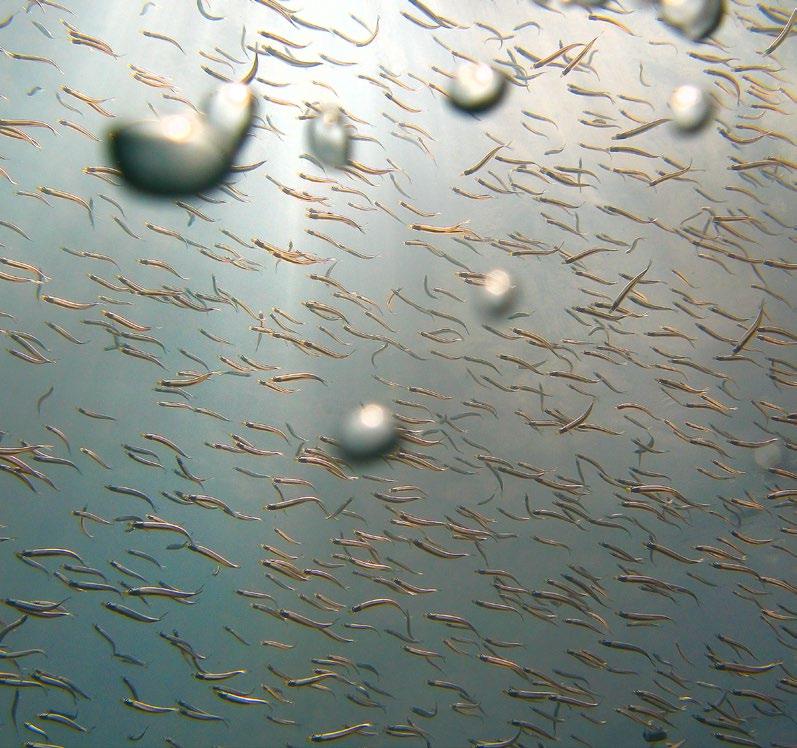
Tusk Trust
University of Kentucky
U.S. Agency for International Development
U.S. Department of State
International Narcotics and Law Enforcement Agency
U.S. Fish and Wildlife Service
Wildcat Foundation
what3words: proposals.vibrantly.commenting
what3words:
Nsumbu Conservtaion Programme
Nsumbu, Nsumbu National Park
what3words: projecting.juggling.truthfully
Frankfurt.Zoological.Society northluangwa nsumbutanganyika
Frankfurt.Zoological.Society north_luangwa nsumbu_tanganyika